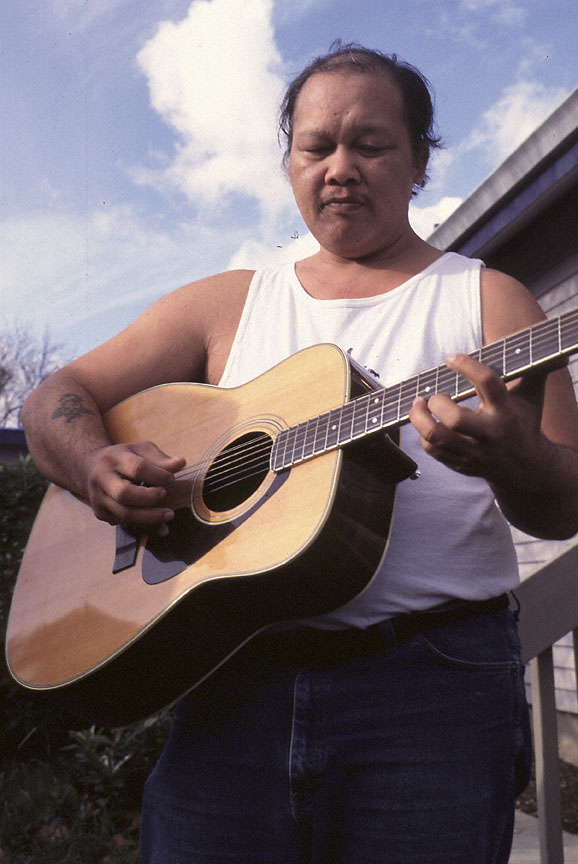- Catalog No. —
- S 2-1874
- Date —
- 1995
- Era —
- 1981-Present (Recent Oregon History)
- Themes —
- Arts, Folklife, Race, Ethnicity, and Nationality
- Credits —
- Oregon Historical Society Folklife Program
- Regions —
- Portland Metropolitan
- Author —
- Eliza Buck
Hawaiian Slack-Key Guitar
This photograph of Sam Kama was taken in 1995 by Eliza Buck. At the time, Kama was teaching Elroy Aipolani (not shown) how to play “slack-key guitar” through the Traditional Arts Apprenticeship Program of the Oregon Historical Society Folklife Program. Slack-key is a finger-picking style of guitar known traditionally among Hawaiians as ki ho’alu, which literally translated means “to loosen the key.”
Sam Kama was born in Honolulu, Hawai’i, in 1950. When he was in his twenties, he began studying slack-key guitar under the guidance of slack-key masters Gabby Pahinui and Raymond Kane. Kama moved to Kalama, Washington, in 1993 and to Portland in 1994. Soon after arriving in Portland, he began playing guitar professionally with a band created with two friends—they called themselves the Kapakahi Brothers. Today, Kama plays a wide variety of venues around the Portland metropolitan area and in the Hawaiian Islands.
Slack-key guitar developed in the Hawaiian Islands during the nineteenth century sometime after the introduction of guitars by European sailors and Latin American cattlemen. As guitars found their way into the hands of Hawaiians unaware of established European tunings and playing styles, they integrated the acoustic instrument into their already rich musical tradition. Hawaiian players loosened the strings to broaden the range of available notes and developed new tunings—tunings historically kept secret and shared only among family members. It wasn’t until the 1970s that slack-key guitarists began to regularly share their knowledge with interested guitar players from outside their families.
Written by Joshua Binus, © Oregon Historical Society, 2005.
